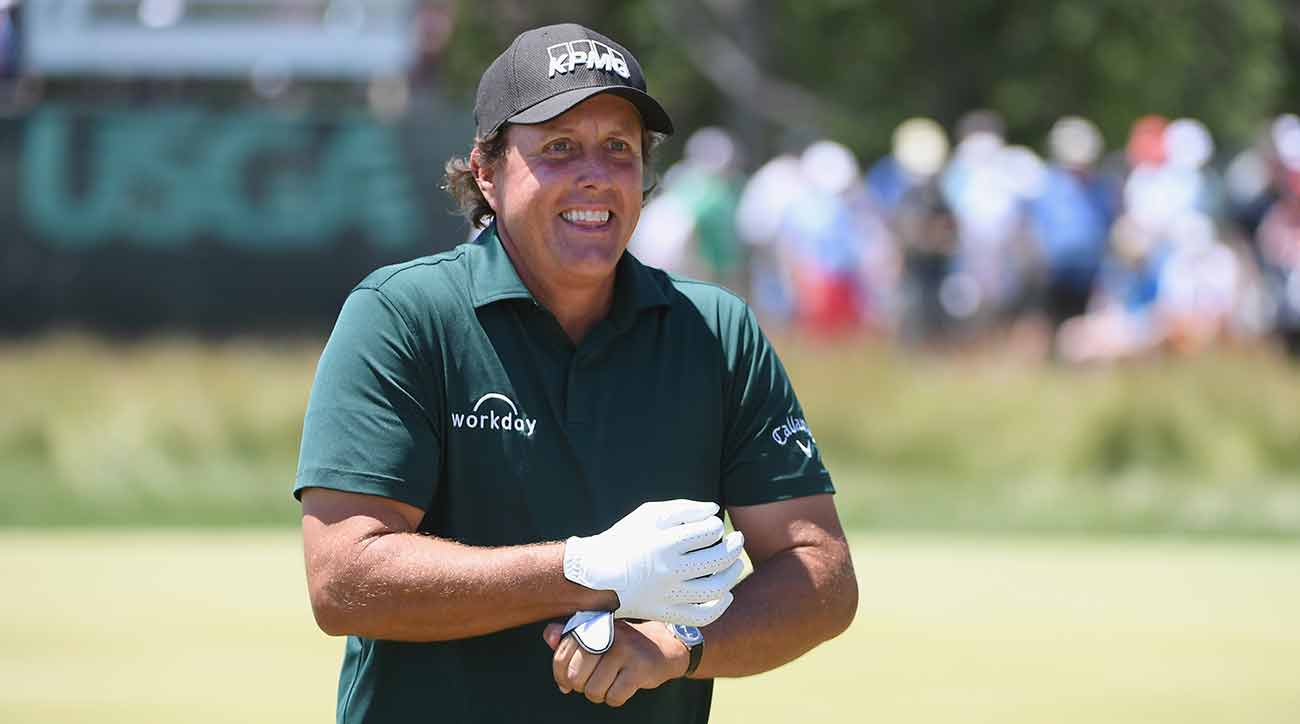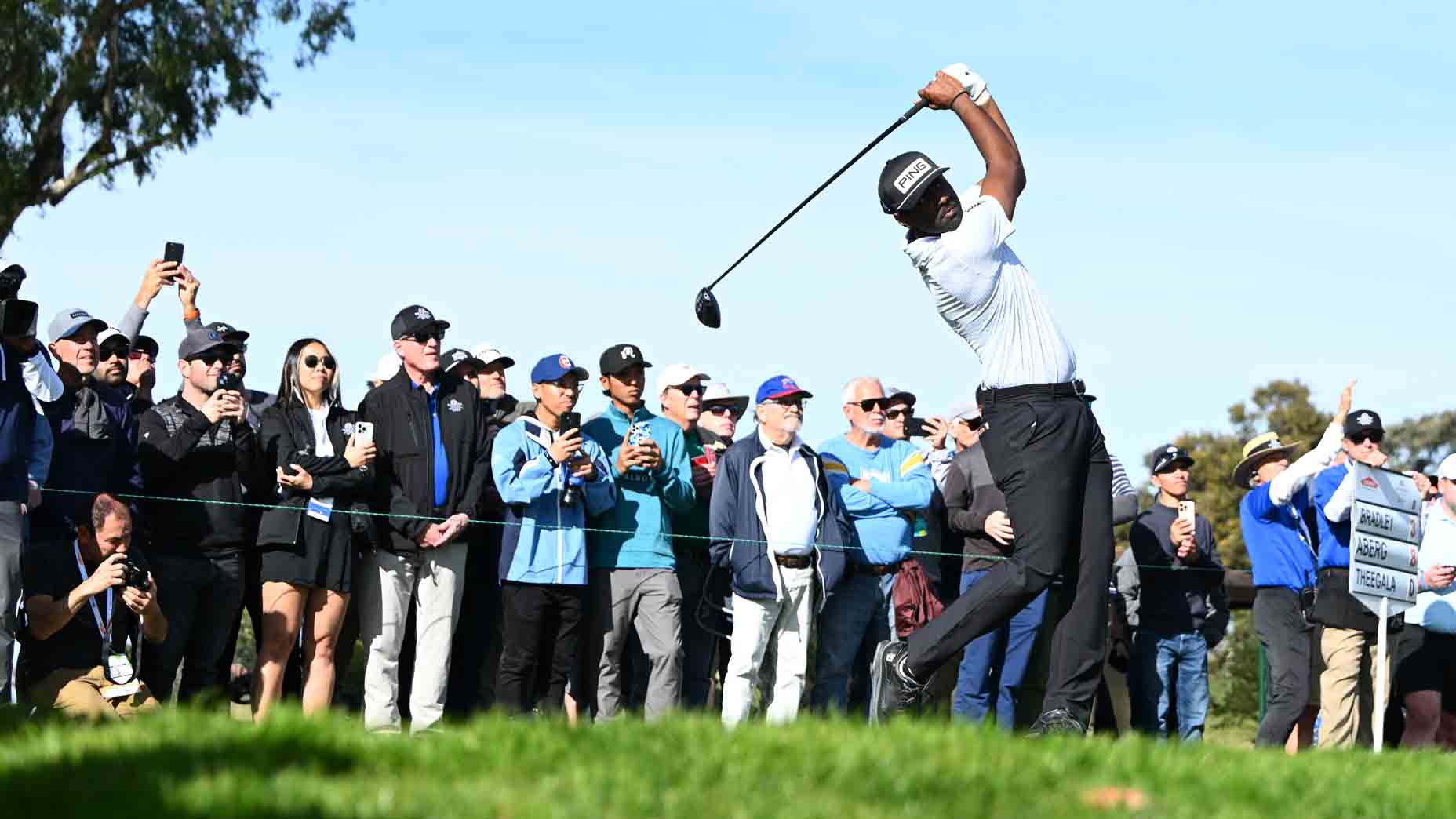SOUTHAMPTON, N.Y. — Phil Mickelson landed in the center of a firestorm Saturday afternoon after he stabbed at his ball as it was slowly trickling beyond the 13th hole.
In what’s sure to become a controversial interpretation of the Rules of Golf, the USGA announced that Mickelson won’t be disqualified.
Before Mickelson had completed his round, John Bodenhamer, the USGA’s senior managing director of championships and governance, said in a press conference that Mickelson will be penalized two shots for breaking Rule 14-5. But, most significantly, no DQ.
Mickelson, who turned 48 today, was struggling midway through his round with bogeys on 8, 9, 10 and 11 and had ballooned to 10 over. But the wheels fell off on 13.
Mickelson faced an 18-foot downhill putt for bogey, and when he missed his ball continued rolling down the green and, likely, off it. Mickelson jogged up to the ball and hit it back toward the hole before it had stopped moving, an obvious breach of the rules. He missed that putt, then missed the comebacker and tapped in for an 8. After some confusion, his score was changed to a 10 to reflect the two-stroke penalty for hitting a moving ball.
Phil Mickelson just did something you do if you’re four years old and playing mini golf for the first time. pic.twitter.com/k0AxplqdMg
— Sean Zak (@Sean_Zak) June 16, 2018
Mickelson’s infraction is partly covered in Rule 1-2, Exerting Influence on Movement of Ball or Altering Physical Conditions, which states that “a player must not (i) take an action with the intent to influence the movement of a ball in play or (ii) alter physical conditions with the intent of affecting the playing of a hole.”
Rule 1-2, however, is broad and has a clause for disqualification. It also has an exception, which states that if one of these instances can be covered under a different rule, it should be. That’s the case with Mickelson’s situation and playing a moving ball. Rule 1-2, “Exerting Influence on Movement of Ball or Altering Physical Conditions” can include affecting the ball’s movement by altering the golf course, like breaking off limbs of a tree, for example. Rule 14-5 is more specific: “a player must not make a stroke at his ball while it is moving. When the ball begins to move only after the player has begun the stroke or the backward movement of his club for the stroke, he incurs no penalty under this Rule for playing a moving ball, but he is not exempt from any penalty under Rule 18-2 (Ball at rest moved by player).”

Bodenhamer was asked why Rule 1-2 wasn’t used.
“Our Rules Committee mobilized quickly and unanimously decided this situation is specifically and explicitly covered under Rule 14-5,” Bodenhamer said. “To go to Rule 1-2 — Phil didn’t purposely deflect or stop the ball, which is talked about in the reference under Rule 14-5, if you look at it. (Rule) 14-5 explicitly covers a player making a stroke at a moving ball, and so we operated under that rule.”
Afterward on the Fox broadcast, Mickelson acknowledged that he struck the ball with the intent of stopping it from rolling off the green, and receiving a two-shot penalty.
“I would gladly take the two shots over continuing that display,” he said.
On the Fox broadcast, David Fay, the top man at the USGA before retiring in 2010, said that after hearing Mickelson’s remarks after the round, Fay would take a different view than the USGA committee that assessed the two-shot penalty. “I probably would’ve lost, but I would’ve lobbied for disqualification,” Fay said.
Rule 1-2’s disqualification clause reads: “In the case of a serious breach of Rule 1-2, the Committee may impose a penalty of disqualification.” The Committee could have ruled that Mickelson stopping his ball on the green allowed him “a significant advantage.”







